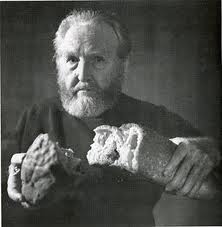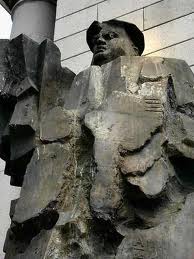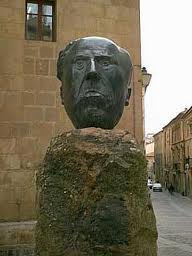Abstract: Pablo Serrano
Pablo Serrano is considered to be one of the most important Spanish artists of the 20th Century. Serrano was a Spanish sculptor who was famous for his Abstract sculptures.
Pablo Serrano (1908-1985)

Pablo Serrano was born in Crivillén in the Spanish community of Aragon. Serrano began studying sculpture in Zaragoza, before continuing his studies in Barcelona, where he attended a boarding school for five years.
After this, Serrano left for Argentina in Latin America in 1929 in order to become a teacher. Up until 1954, Serrano spent his time divided between Argentina and Uruguay, where he had settled in the city of Montevideo. Here, Pablo Serrano completed many of his most famous sculptures. South America was also where he met the other artists Lucio Fontana and Joaquín Torres García.
Pablo Serrano became a success in South America, receiving the 'Primer Premio Nacional del Salón de Bellas Artes de Montevideo' (First National Prize of the Fine Arts Salon of Montevideo) in 1944, 1951 and 1954. Serrano had become an influential Avant-garde sculptor whose works could be seen all over Latin America in Argentina, Mexico, Chile and Uruguay.

After having received the 'Gran Premio en la Bienal de Montevideo' (Grand Prize in the Biennial Exhibition of Montevideo) in 1955, Pablo Serrano then returned to Spain where he would also win the 'Gran Premio de Escultura' (Grand Prize for Sculpture) in the Biennial Hispano-American Exhibition in Barcelona.
The year of 1957 saw Serrano holding his first solo exhibition in Madrid in which he displayed some Expressionist works such as 'Interpretaciones al retrato' (Interpretations of the Portrait) and some more Abstract works such as 'Hierros encontrados y soldados' (Irons Found and Soldiers). Also in this year, Pablo Serrano co-founded the 'Grupo El Paso' (El Paso Group) with fellow artists Juana Francés, whom he would later marry, Manolo Millares, and Antonio Saura. This group transformed itself into the leading vanguardist group in Spain and it helped introduce abstract art into the country.
Following this, Pablo Serrano's next project 'Quema del objeto' (Burning of the Object) series would involve representing fire as a force of destruction but also as facilitating renovation. The 'Ritmos en el espacio' (Rhythms in Space) series was particularly well received by art and sculpture critics. These sculptures used stainless steel rods in order to creating dynamic shapes. The 'Ritmos en el espacio' (Rhythms in Space) series was displayed in several museums across Europe and the USA, further increasing Pablo Serrano's fame.
This fame opened up many opportunities for Pablo Serrano, including the chance to exhibit some of his works in the New Spanish Painting and Sculpture Exhibition held at the Museum of Modern Art in New York. Serrano also continued to receive many prizes such as the 'Premio Julio González' (Julio Gonzalez Prize) in 1961.
In 1964, Pablo Serrano created a series of sculptures, 'Los fajaditos', which featured figures that had been bound and gagged. This series was a metaphorical response to the dictatorship of General Francisco Franco.

The 1960s continued to be filled with Serrano's exhibitions all over the world including at the Guggenheim Museum in New York and the National Museum of Modern Art in Paris. The following decades saw Serrano being made a member of many prestigious art schools and academies. In 1969, he became a member of the 'Real Academia de Artes de Flandes' (Royal Academy of Arts of Flandes). This was followed by his memberships as a 'Caballero de las Artes y las Letras de Francia' (Man of Arts and Literature of France) in 1977, and his being made an Academic of Fine Arts at the 'Academia de San Fernando' (San Fernando Academy) in 1980.
In the final months of his life, Pablo Serrano put on an exhibition at the Guggenheim Museum in New York, in which he displayed his series of works entitled 'Divertimentos con Picasso, la guitarra y el cubismo' (Divertimentos with Picasso, Guitar and Cubism). Serrano died in Madrid in 1985 at the age of seventy-seven.
Today his life and works are commemorated in the 'Museo Pablo Serrano' (Pablo Serrano Museum) in Zaragoza which opened in 1994. This is a great place to start if you want to study this Spanish sculptor.
